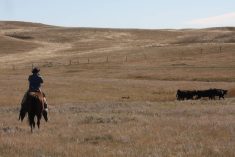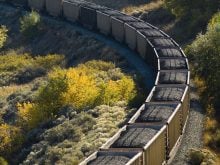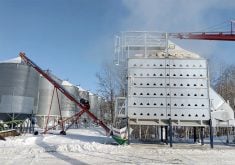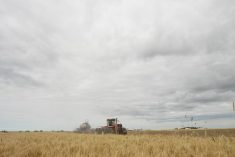Native species take time to appear and do not easily move into areas that are disturbed by industrial development
LACOMBE, Alta. — Recovery of native grasslands following industrial development is uncertain, says a vegetation ecologist.
It is expensive, time consuming and risky because reclaimed areas are vulnerable to weeds and invasive species, Jane Lancaster said at the Alberta Invasive Species Council’s annual meeting held recently in Lacombe.
Ideally native plants should be used for reclamation of oil wells or pipeline sites but finding the correct seeds is difficult. Recovery can take decades, and some reclamation strategies have not worked well because of poor rainfall, climate or the wrong plant communities for the region.
Read Also

Stacking Canada up on gene editing livestock
Canada may want to gauge how Argentina and other countries have approached gene editing in livestock and what that has meant for local innovation.
Working with the Foothills Restoration Institute, researchers such as Lancaster have assessed the success of reclamation sites. They also work with resource companies that have maintained records of their activity from three to 20 years ago.
Resilient plant communities include species with diverse growth patterns and different life cycles. A healthy rangeland is productive, captures water, stores carbon and controls erosion.
“All these combined together provide health and reliance and the ability of a plant community to adapt to change,” she said.
Native species establish slowly. They are slow growing and long lived but are also adapted to nutrient-poor environments.
It could take 10 years before those involved with reclamation know if they are on the right track. Ongoing monitoring is needed to see what happens because there will be a succession process in which a gradual replacement of one plant community occurs over time.
The early species could be wheat and needle grasses, which provide cover, but over time they are replaced with longer-term communities. In the early growing stages a site is dominated by annual weeds and could be vulnerable to invasion of unwanted plants.
Different species have different functions, such as stopping erosion, providing shade or building litter on the soil surface.
Seed banks exist in these restored areas, but wild plants take time to appear and do not easily move into a disturbed area.
There are very few examples of successful restoration in foothills fescue and montaine regions after disturbance, said Lancaster.
Foothills rough fescue evolved with grazing and fire. The deep-rooted, drought tolerant species is a valuable part of the ecosystem because it holds protein and is hardy.
As well, just because the grass is called fescue does not mean it is a substitute for the native products.
“We can get crazy substitutions for rough fescue,” she said.
“There are no good substitutes.”
Grasses such as rough fescue are slow growing but once established can last 100 years, said Lancaster.
Soft grasses with lots of biomass such as Kentucky bluegrass, timothy smooth brome, Canada bluegrass and orchard grass are often used. They establish quickly but do not build soil the way fescue does because the roots are more shallow.
“They do not produce the same resources or have the same function in the ecosystem,” she said.
Finding the proper seeds is a challenge. Wild seed harvesters collect seed when it is blooming, and this needs to be encouraged to obtain the appropriate seeds for reclamation projects.
Another option is to cover a disturbed area with native hay that was cut from healthy native grassland.
Seedlings are useful for slow growing grasses, but this is expensive and hard to do.
Salvaged sod from a site can sometimes work, but this is an expensive process and needs to be collected late in the summer. Laying the sod also creates an uneven surface.
For more information on native grasslands and restoration projects, visit foothillsrestorationforum.ca.















